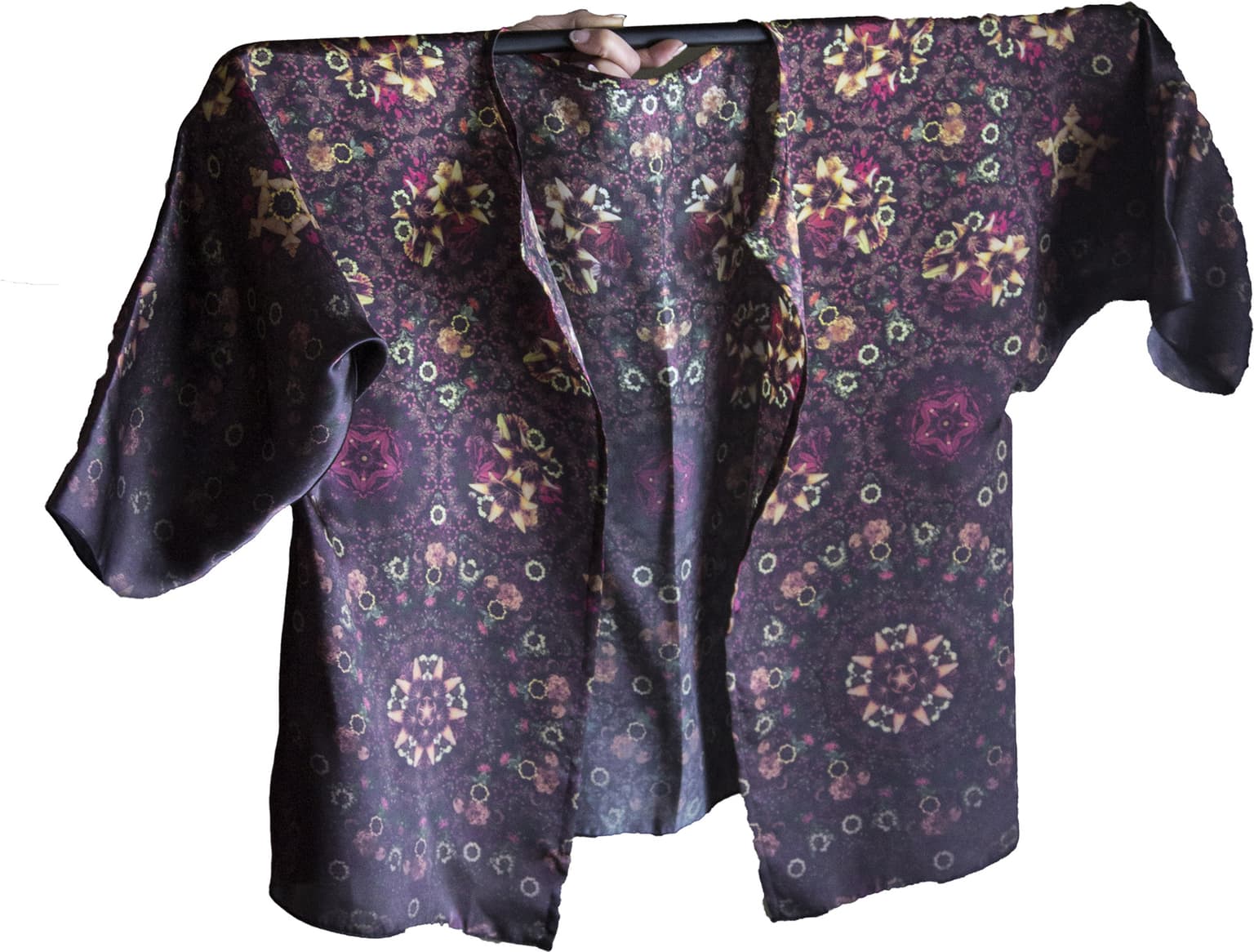Anna Chupa and Michael Chupa
Artists
Anna Chupa
Professor of Art
Art Architecture and Design Department, Lehigh University
Easton, PA USA
Statement
My tiling designs are inspired by Islamic architecture. I extract photographs of plant details, mostly floral, from their backgrounds, montage them into still life compositions and embed them into tiles called girih. The word girih literally translates to “knot” in Arabic, and was first used by Peter J. Lu to describe a set of five tiles: a regular decagon, a regular pentagon, a concave hexagon (bowtie), an elongated hexagon, and a rhombus decorated with zigzagging lines called strapwork. At close viewing distances, flowers are visible and distinct, but these dissolve into the broader context of geometric pattern at more typical viewing distances, consistent with the aesthetic of dematerialization in Islamic architecture.
Artworks

Hellebore
90 x 33 cm
Acid dye on Silk
2012

San Diego Jacket
55 x 60 cm
Jacket made from acid dye on silk
2015

Subdivided Jacket
55 x 60 cm
Jacket made from acid dye on silk
2014